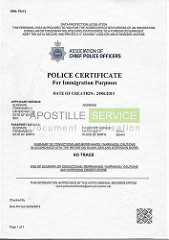
Interested working in Human Resources? Well, let’s have a look at what that entails…
HR has never been so popular but here is the problem, there is an oversupply of qualified people with experience who are getting interviews. Then you can add to that, people who fall into the following categories
- Those with academic qualifications but no experience
- Those without appropriate qualifications or experience
Sadly these last two groups are the ones who are struggling in finding a HR role.
With those working in HR, you will often find people who had no real plan to be there, they just fell into the role!
Academically qualified versus professionally qualified
What does that mean? Someone who is academically qualified will often have done a first degree (in any subject) then opted to undertake a Masters (whether an MA or MSc) in an HR subject. This means they will have studied the theory but won’t necessary be able to benefit from its application. The reason is a Masters is a Level 7 and that covers strategy and doesn’t cover operational HR. So anyone thinking that having one will be head and shoulders over the competition is likely to be disappointed. as it is a massive miscalculation and pretty much overkill if you are going to be applying for entry level roles.
So what is this Professionally qualified about then?
In the UK the Chartered Institute of Personnel and Development (CIPD) is the lead body for the profession, and they developed a professional qualification structure .
A professionally qualified person will have looked at where they were at the start of the process in determining what qualification was most suitable, it is about developing .
So if you are entry level you will probably have or be studying the Foundation Level, this is a Level 3 qualification and covers HR support at an operational level. It is available as an Award, Certificate or Diploma depending on how credits/modules have been completed. It is advisable to do all the modules and gain the Diploma.
The same structure can be found at the Intermediate Level which is Level 5, make sure that you have enrolled for the full Diploma as this can open more doors/avenues in your career and qualifications. This level does not cover any of the subject matter covered at Level 3 and is intended for those with experience and who have completed Level 3. It is meant to be for those who are Middle Managers, for example, HR Advisors. It is not a suitable qualification for entry level roles.
The final level is the Advanced Level and this is set at Level 7, again available as Award, Advanced Certificate (equivalent to a Post Graduate Certificate) and Advanced Diploma (equivalent to a Post Graduate Diploma). The CIPD also recognises select University Masters degrees as meeting the same requirements. Realistically you should be in a Management role.
You should only be attempting each level when you are ready and it will benefit you careerwise.
Mike Morrison FCIPD of RapidBI makes a very good point about qualifications:
Please do not follow the “academic” attitude to qualifications and always seek the same or higher “levels”.
Think of the “levels”, not as levels but of packages of learning.
What you do at “level 5” is not more then level 3 or less than level 7 but different.If you truly want to be a rounded and balanced professional in any topic.. start at the bottom – not the middle – for there will be a lot you miss.
Remember HR is a specialist area on its own, and whilst you will have adjunct information, you will not have ALL of the underpinning knowledge.
To clarify:
The levels are a little like house building.
There is no point having a roof, if you have not foundations (level 3) and walls (level 5).
The term “level” is IMHO a hinderance. Level 7 is not “better” than a level 3 – it’s different content.
Lower level and entry jobs need the content of a level 3 not level 7
Build a career.
Careers are pretty much like marathons, you will do a lot better if you prepare for the long haul instead of a manic race to where you think you should be.
One bit of exciting news is that the University of Staffordshire is now accepting CIPD Level 5 Diploma holders onto its BA (Hons) Business and Management top-up course which runs for a year. This means students will be studying business and management subjects with an HR overview, which will be very beneficial to someone building an HR career.




